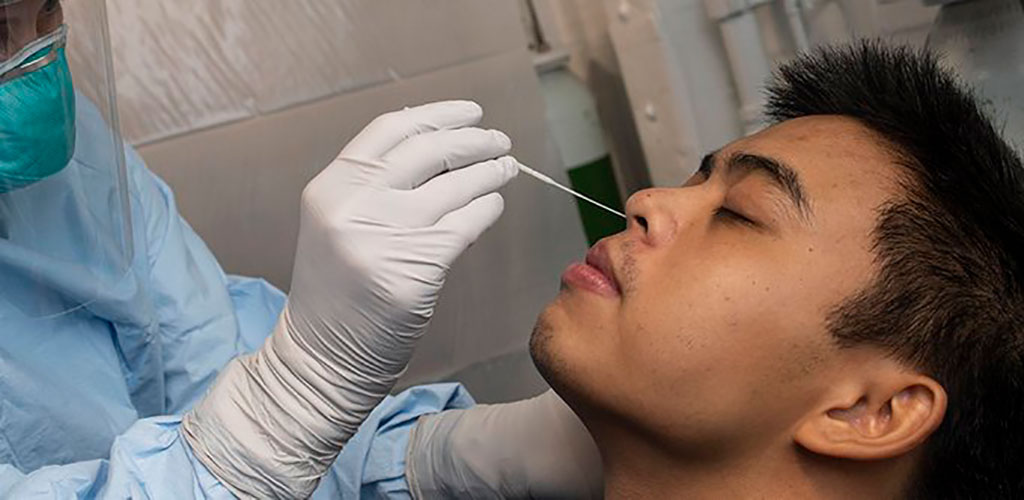Combining PCR and Antibody Tests at POC Dramatically Increases COVID-19 Detection in Hospitalized Patients
By LabMedica International staff writers
Posted on 03 Sep 2020
The use of combined rapid point-of-care nucleic acid and antibody testing for SARS-CoV-2 infection by researchers at the University of Cambridge (Cambridge, UK) has shown that this approach was superior to virus detection alone for diagnosing COVID-19 disease.Posted on 03 Sep 2020
PCR tests involve extracting a miniscule amount of RNA from the virus and copying it millions of times, creating an amount large enough to confirm presence of the virus. The virus is captured through a swab inside the nostrils and at the back of the throat. However, it can take as long as 14 days for an individual to show symptoms of COVID-19, by which time the virus may have moved away from the nose and throat and into the lungs and other tissues and organs, making it harder to detect via a swab test. As a result, studies have shown that PCR tests can miss as many as a half of infected patients five days after infection. Antibody tests provide an alternative way of identifying infected individuals, but antibodies-molecules produced by the human immune system in response to infection-generally do not appear until at least six days after infection.

Illustration
The Cambridge researchers used the approach of combining rapid point-of-care PCR and antibody tests to diagnose 45 patients, each of whom had suspected moderate to severe COVID-19 disease, and provided nose/throat swabs for the tests detecting nucleic acid (virus genetic material) and blood serum for antibody testing an average (median) of seven days after the onset of illness. The team designed a gold standard reference test made of two parts, either of which could be positive to confirm COVID-19. The first part was an in vitro test where artificial SARS-CoV-2 viruses were made and mixed with serum from patients to see whether the serum contained neutralizing antibodies. The second part of the gold standard was the standard Public Health England laboratory test looking for genetic viral material in nose/throat swabs. Using this gold standard, 24 of the patients had COVID-19. The team used SAMBA II machines, developed by Cambridge spinout company Diagnostics for the Real World, for the nucleic acid tests, and a combination of two finger prick antibody tests, both of which test for antibodies against the spike protein on the surface of the SARS-CoV-2 virus.
Overall, the nucleic acid tests could identify eight out of 10 patients with COVID-19, but when combined with the rapid antibody tests, 100% of the COVID-19 patients were correctly identified. Among the 21 patients who did not have COVID-19, there were four false positive results with one antibody test and only one false positive with the second antibody test, demonstrating that one performed better than the other.
The researchers envisage that hospitals deploying this approach would carry out a finger prick blood test and nose/throat swab at the same time on admission to hospital. The antibody test result is available within 15 minutes, but might benefit from confirmation with a second point-of-care antibody test. Importantly the study showed that the antibody tests can detect antibodies against a mutated form of SARS-CoV-2, D614G in spike protein that has now become the dominant strain worldwide. This approach could be particularly beneficial in low resource settings where centralized virology laboratories are scarce and the pandemic is expanding, according to the researchers. In addition, it removes the need for repeated nose/throat swabbing when the first test is negative and suspicion of COVID-19 is high, which may generate aerosols and lead to transmission.
“Combining point-of-care PCR and antibody testing could be a game-changer for rapidly identifying those patients with moderate to severe COVID-19 infection,” said Professor Ravi Gupta from the Cambridge Institute of Therapeutic Immunology and Infectious Disease at the University of Cambridge who led the team. “This could prove extremely useful, particularly in the event of a second wave arising during flu season, when it will not be immediately clear whether the patients had COVID-19 or seasonal flu.”
Related Links:
University of Cambridge














